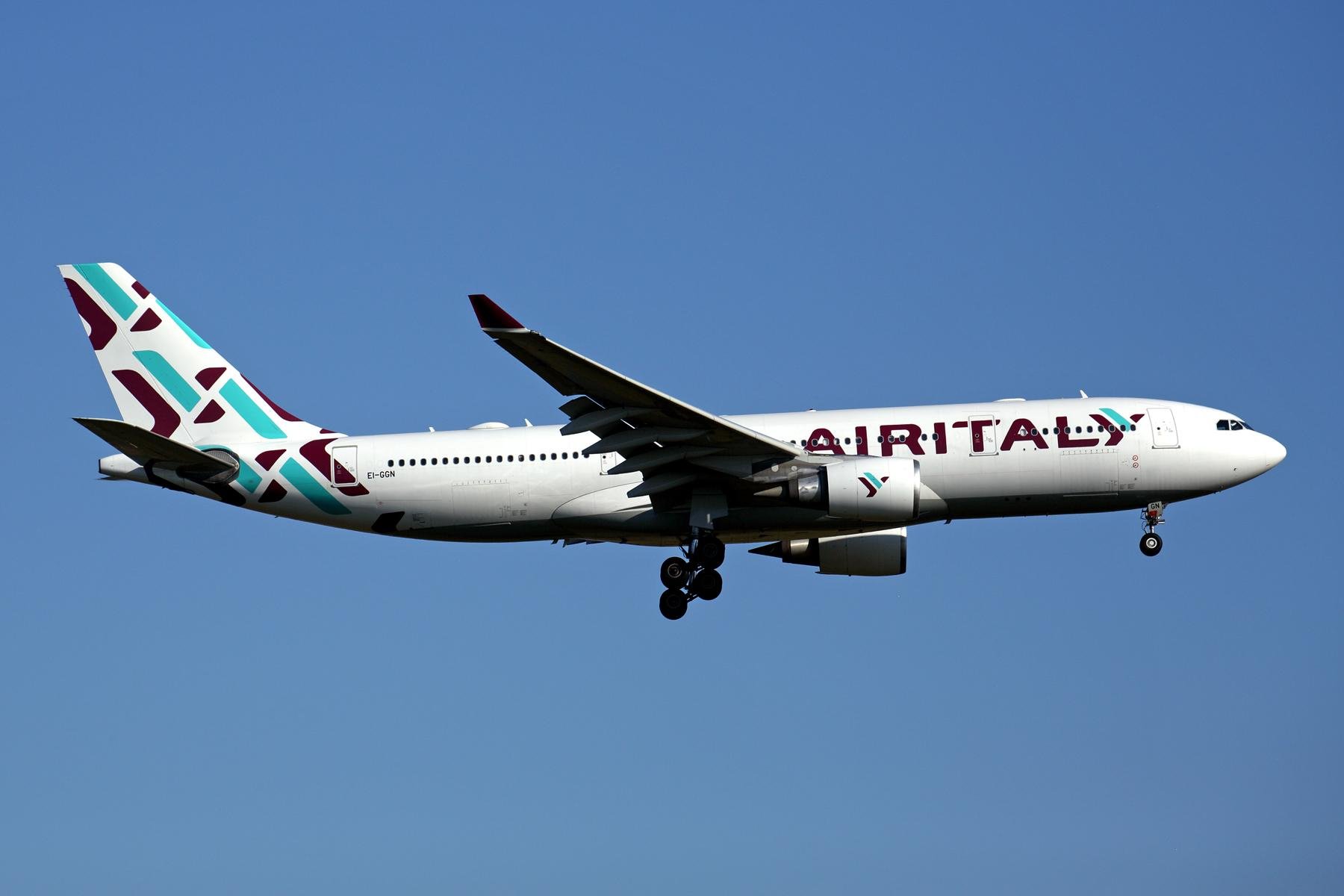
Qatar Airways’ foray into the European airline market came to a grinding halt Feb. 11 when Air Italy, in which it held a 49% stake, ceased flying. The Italian carrier drew down the shutters just two weeks shy of its two-year anniversary.
Unlike many recent European airline failures, Air Italy’s demise was at least graceful. By opting for Italy’s liquidazione in bonis process, or voluntary liquidation, the carrier avoided the scenes of stranded passengers scrambling for flights to get home. Other airlines will be used to operate Air Italy’s flights until the morning of Feb. 26 to allow passengers with booked, near-term flights to complete their journeys, while creditors such as airports will receive payment for debts. Passengers who had tickets fly beyond the Feb. 26 were told their fares will be refunded.
When Qatar Airways Group CEO, Akbar Al Baker, stepped in to take a minority shareholding in what was then Meridiana Airlines in February 2018, his objective was clear. With Alitalia limping through a draw-out administration process, Al Baker saw a rebranded Meridana as a suitable vehicle to challenge the flag carrier.
Meridiana’s chairman, Francesco Violante, also saw a gap in the market for more direct long-haul services from Milan Malpensa, the airline’s main operational base.
With EU regulations limiting the shareholding of a non-EU entity such as Qatar Airways in an EU carrier to 49%, the majority 51% shareholder remained Italy’s Alisarda, which is ultimately backed by the Aga Khan, leader of the world’s Ismaili Moslem community.
Al Baker promised a huge infusion of aircraft—50 by 2022—with the existing 11-strong fleet of aging Boeing 767-300ERs and 737NGs to be supplemented, then rapidly replaced by, more than 20 737 MAX 8s from an order previously placed by Qatar Airways, together with five A330-200s leased (at market rates) from the Gulf carrier’s fleet. The A330s were, in turn, scheduled to be replaced at Air Italy from May 2019 by Boeing 787-8s, again from a Qatar Airways order with Boeing, although these never materialized.
It was a huge turnaround for the Sardinia-based Italian airline, which had begun its existence in 1963 as Alisarda. The airline was founded after the Aga Khan visited Sardinia and was enchanted by the island’s north-eastern Costa Smeralda, but shocked by its lack of communications links.
An airline to connect the island to the Italian mainland seemed like a way to bring tourism to the island and give the islanders an easier means of reaching domestic destinations.
Qatar Airways’ arrival saw a rebranding exercise to make clear it was Italian, a new emphasis on inflight service and an influx of managers from Qatar.
Losses multiplied, however, with a €164 million ($179 million) loss in 2018 and recent reports in the Italian media suggesting that 2019’s loss could be €200 million or more.
An Alisarda spokesman told ATW that net losses were “five times higher [than] before the launch of the new airline, with no improvement in sight.
“The business plan announced with the launch of Air Italy was really ambitious. But the market has not reacted to the new product launches as expected.”
One Qatar Airways source told ATW: “I know that the [passenger] loads have been, shall we say, disappointing.”
Meanwhile, Air Italy’s long-haul network ambitions—and in particular its routes to the US-were targeted by American Airlines, Delta Air Lines and United Airlines. The US majors’ management and union leaders campaigned to present Air Italy as a Qatar carrier in Italian clothing. On that basis, they claimed, the Italy-US routes breached an agreement with Doha that Qatar Airways would not launch fifth-freedom services that are part of the US-Qatar Open Skies pact. The campaign picked up some traction in Congress, but did not cause the failure of Air Italy, which was staunchly supported by the European Commission as a European carrier with every right to fly to the US under European Union (EU)-US Open Skies. In truth, what Air Italy most lacked was a US major airline partner and brand recognition.
Competitive field
Even more problematic was Air Italy’s home market. European airline sector has been brutally competitive in recent years, with a stream of airline failures as too many seats chase too few passengers. The biggest competitor, of course, was Alitalia, which has been propped up by extended and extensive government loans throughout Air Italy’s two-year life.
The grounding of the MAX, of which Air Italy had three at the time of its closure, was also a factor in the carrier’s demise. (Aviation Week’s Fleet Discovery database lists seven MAX as being “in storage” for Air Italy, the discrepancy presumably the result of four being stored in the US prior to delivery.)
The unavailability of the three MAXs “had serious financial repercussions on Air Italy activities” and “seriously compromised” the airline’s plans, “which were premised on the fleet comprising 20 Boeing 737 MAXs,” the Alisarda spokesman said.
The Air Italy shareholders’ statement announcing the decision to put the company into voluntary liquidation talked of both parties agreeing the measure. However, Qatar Airways issued its own statement, hinting that the decision to close the airline had come from Alisarda.
After stressing its support for Air Italy’s management and business plan, “even with the changing competitive environment and the increasingly difficult market conditions severely impacting the air transport industry,” the Gulf carrier said it had continued its commitment to supporting Air Italy’s staff and the local communities they served.
“Qatar Airways was ready once again to play its part in supporting the growth of the airline, but this would only have been possible with the commitment of all shareholders,” it said.
With EU rules limiting Qatar Airways’ stake to 49%, this meant that for the Gulf carrier to have injected more equity would have required Alisarda to do the same, so as not to breach the 49% limit. The suggestion in the Qatar Airways statement is that Alisarda was not prepared to do so.



